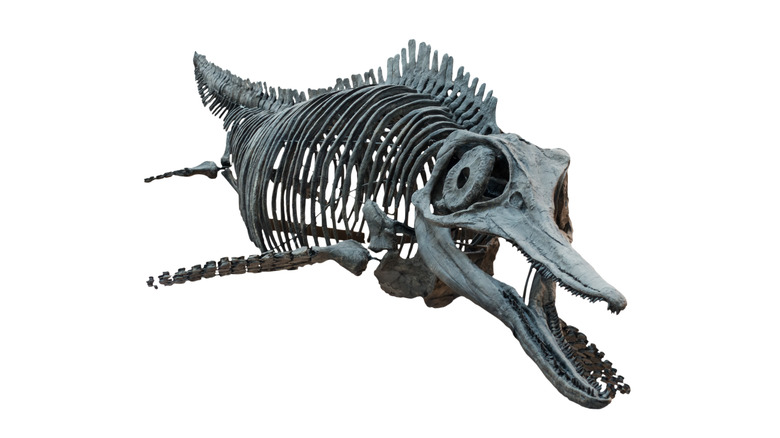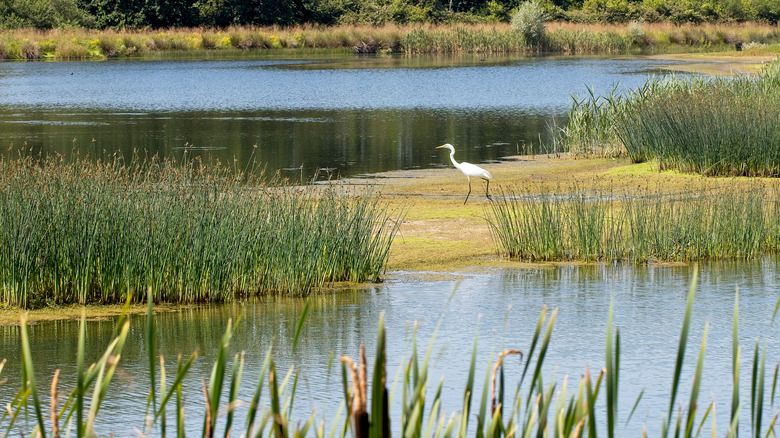What This 180 Million-Year-Old 'Sea Dragon' Fossil Might Be Able To Tell Us
The ancient world was full of any number of gigantic creatures on both the land and sea. The fossil of one such animal were recently found in England, by happenstance, at the Rutland Water Nature Reserve. This so-called "sea dragon" is really a species of ichthyosaur (an example, pictured above), and it's the largest and most complete example of its kind ever found in the U.K., as Live Science reports. The discovery of such an unprecedented specimen offers incredible insight into what the world was like in the time that the ocean dweller lived, some 180 million years ago.
These fossils are not the first ichthyosaur remains ever found in Great Britain. Per USA Today, these ancient organisms were different from dinosaurs, and many species existed. Some were only 3 feet long, while others reached lengths of 82 feet. According to Live Science, ichthyosaurs, meaning "fish lizard," evolved during the Triassic Era about a quarter of a billion years ago, only to die out completely in the Cretaceous period, about 200,000 years later. Most notable about the ichthyosaur remains found recently in the English midlands is not just how well-preserved the fossils are, but the specific species of ichthyosaur it was, and what that tells us about the ecosystem in which it lived.
It was an apex predator
Noticed during routine work at the Rutland Water Nature Reserve, the ichthyosaur fossil recently discovered by scientists measures about 30 feet long — that's about the length of two midsize sedans back to back, or the height of an average telephone pole, per Measuring Stuff. Its skull weighs about a ton, according to Global News. Remarkably complete, these remains appear as if the creature had only just recently lay down and died in an area of the country once covered by ocean water. The example found in the Rutland reserve (pictured above) is also the first time this specific species of ichthyosaur was ever found in the U.K.
Belonging to the species Temnodontosaurus trigonodon, the "sea dragon" was an apex predator in the ecosystem where it lived. The discovery of the intact remains could inform scientists about what the marine environment was like 200 million years ago. "Despite the many ichthyosaur fossils found in Britain, it is remarkable to think that the Rutland ichthyosaur is the largest skeleton ever found in the U.K. It is a truly unprecedented discovery and one of the greatest finds in British paleontological history," University of Manchester paleontologist and ichthyosaur expert Dean Lomax said, according to USA Today. The discovery was made when what looked like clay pipes were noticed sticking out of the mud. These were confirmed to be the vertebrae of the animal, according to the report.

